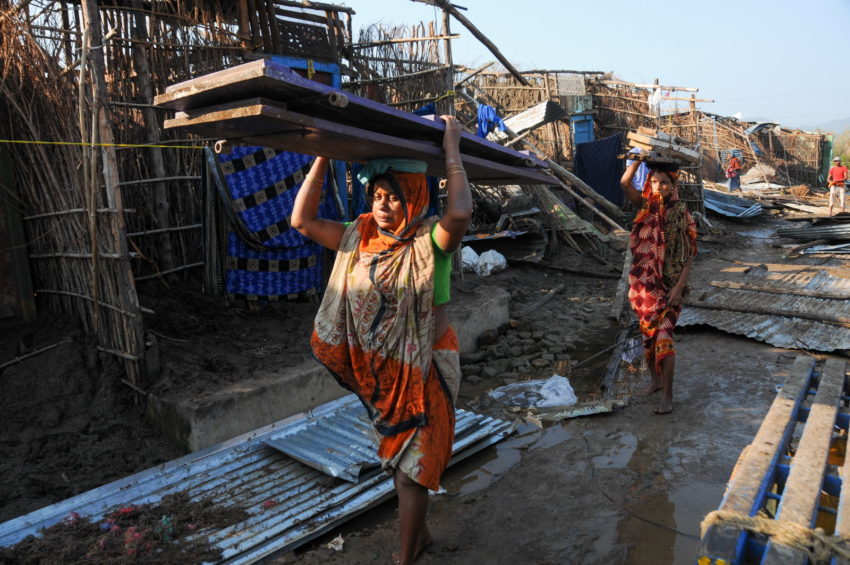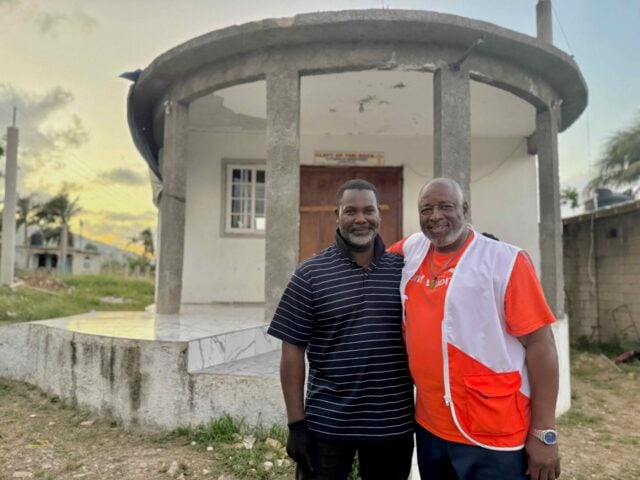One of the strongest storms to hit India in 14 years, Cyclone Phailin packed powerful winds of 140 mph along with torrential rain when it made landfall in October 2013. This extreme weather toppled trees and power lines, causing significant damage along an estimated 250 miles of the Andhra Pradesh and Odisha coastlines.
Cyclone Phailin resulted in the deaths of 23 people and affected about 9 million residents. In an effort to avoid repeating the high death toll of the 1999 cyclone, which claimed the lives of 10,000 people, nearly 1 million people were evacuated before Phailin’s landfall.
Cyclone Phailin: Facts, FAQs, and how to help
Explore facts, frequently asked questions about Cyclone Phailin, and learn how you can help people affected by disasters.
- Fast facts: Cyclone Phailin
- Why was Cyclone Phailin called a super typhoon, super cyclone, or superstorm?
- Is India a disaster-prone country?
- How did World Vision prepare for and respond to Cyclone Phailin?
- How can I help vulnerable children and families affected by disasters today?
Fast facts: Cyclone Phailin
- Cyclone Phailin, the largest storm to hit India’s Odisha and Andhra Pradesh states in 14 years, forced the evacuation of nearly 1 million people, according to the World Bank. The storm claimed the lives of 23 people and affected an estimated 9 million residents.
- It made landfall near Gopalpur, in India’s Odisha state, the night of October 12, 2013.
- Phailin destroyed crops worth more than $394 million along with hundreds of thousands of houses, schools, and other buildings.
- Authorities, with international assistance, conducted one of the largest evacuation operations in history, relocating millions of people from coastal areas. Well-executed efforts significantly reduced casualties.
- Cyclone Phailin caused extensive damage to power lines, roads, and communication networks, disrupting the daily lives of those affected.
Why is Cyclone Phailin called a super typhoon, super cyclone, or superstorm?
Cyclone Phailin was given names like super typhoon, super cyclone, and superstorm because it had incredibly strong sustained winds of over 150 mph when it hit India.
Is India a disaster-prone country?
India is one of the world’s most vulnerable nations to disasters, and significant numbers of people are consistently displaced by cyclones, floods (caused by annual monsoons), droughts, heatwaves, and landslides.
How did World Vision prepare for and respond to Cyclone Phailin?
World Vision began working alongside communities in India in 1962 to help families lift themselves out of poverty. At the time Cyclone Phailin struck, we were actively engaged in over 5,300 communities across 26 states with our programming reaching 2.4 million children.
Disaster preparedness
World Vision’s community disaster preparedness training was essential in the evacuation of tens of thousands of people ahead of the deadly storm. In Ranpur, a small town in Odisha’s Nayagarh district, 40 community task force teams trained by World Vision coordinated the evacuation of 12,000 people. The task force included men, women, and youth who were trained in disaster preparedness and had skills in search and rescue, basic first aid, and safeguarding livestock.
In Jagatsinghpur district, we equipped the community task force with megaphones, life jackets, torchlights, and ropes. These tools proved instrumental in rallying people for evacuation, using the megaphone’s siren to sound the alert. Dharmender, director of World Vision’s work in Nirman at the time, summarized the impact: “We are happy how small yet important things like the megaphones can help in such crucial times.”
Relief distributions
World Vision wasted no time in providing immediate relief supplies to families affected by Cyclone Phailin. Family food kits and household kits were pre-positioned, ready for distribution as soon as road access was restored.
- Family food kits included essential items such as rice, beans, high-energy biscuits, and bottled water.
- Household kits included bed nets, plastic mats, bed sheets, tarps, women’s saree dresses, men’s traditional dhotis, cooking utensils, plates, and buckets.
Long-term recovery
World Vision coordinated with national and local disaster management teams to help meet community needs for rebuilding homes, infrastructure, access to clean water and sanitation, and livelihoods to ultimately benefit 30,000 people.
How can I help vulnerable children and families affected by disasters today?
- Pray: Lift up children and families impacted by disasters around the world.
- Give: Your gift will help provide emergency food aid, clean water, healthcare, and other essential care to children and families affected by disasters like cyclones.
Sevil Omer of World Vision’s U.S. staff contributed to this article.


